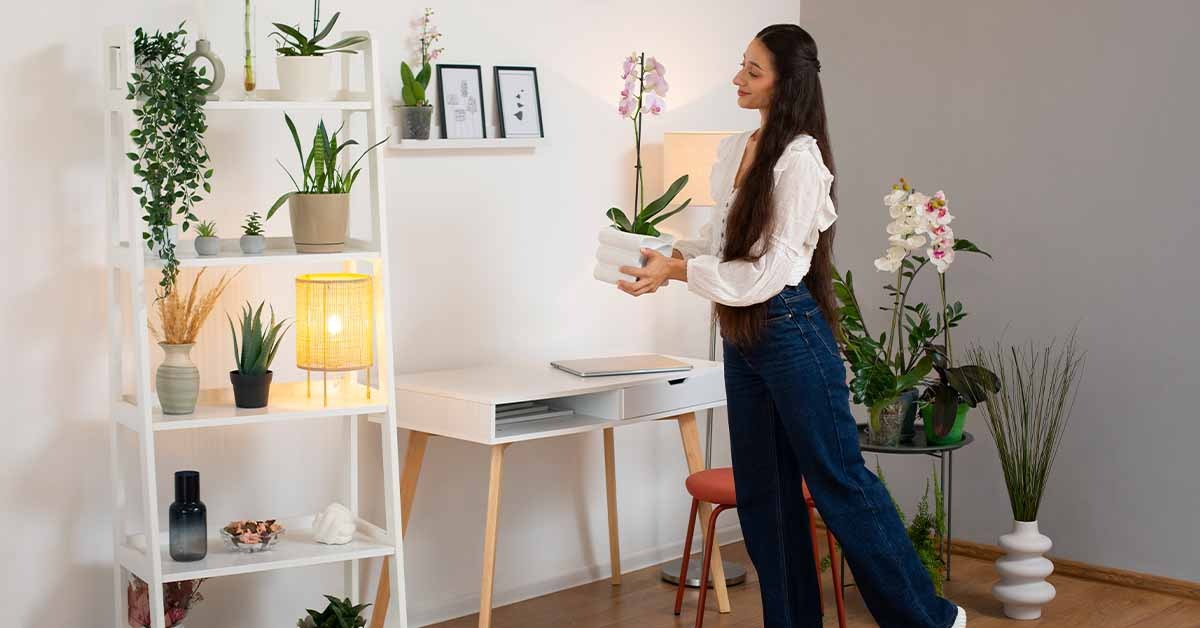Home and Decor
5 min read
Small Decor Changes That Make a Big Difference at Home
October 08 , 2025
By Sharib

Making your home cozier and inviting can be cheap and straightforward. Sometimes it is the little things that change how you enjoy a space. Rearranging a light fixture, adding texture, and incorporating a plant can make a space more interesting. Minor changes are also inexpensive, simple, and flexible, allowing you to accommodate your taste. This guide identifies the areas that make your home feel different and new, while eliminating the cost and hassle of a complete makeover.
1. Why Small Decor Changes Matter
While the big picture is essential, it is really the small things that change how we feel in a space. Light, color, and arrangement are processed within a fraction of a second. Even subtle shifts can change one's mood. A dull space can be brightened with layered lighting or the clever placement of mirrors. Cluttered and chaotic spaces can feel more organized with a few simple changes. More importantly, these adjustments are really within reach. Unlike furniture or flooring, which takes a long time to save for, you can change how your space feels in just a weekend. You can also appreciate modular furniture because of how quickly it can adapt to different changes. Your preferences may evolve, but minor adjustments can be made to accommodate them. For instance, you can easily replace cushion covers or repaint small corners of furniture.
2. Observe How A Room "Speaks."
Rooms have different integrated traits that influence their decoration. Before you change a room or space, consider how daylight moves and flows through the room. Identify the "power" wall, the one that draws the most attention, and the placement of shadows, as well as the movement of the people. This informs you of any design changes you may want to make. For instance, a long corridor can create a feeling of constriction, so ensure the decor is light and airy. A living room with soft evening light will make warm colors and additional lamps more aesthetically pleasing. When you design according to the room's character, changes and shifts in feel will feel easy rather than forced.
3. The Impact Of Lighting
Because it sets the mood and highlights specific spaces and objects, lighting has the power to influence and transform the way a space is decorated and styled. Mirrors can amplify a room, and they can also disperse and distribute light. Placing a mirror opposite a window also doubles the amount of light entering the room, creating the illusion of a larger space. Even small round mirrors can add some light and reflective accent to the sideboard. Spaces with darker corners can be brightened up with reflective objects, such as glass or metal trays, and further enhanced with decorative items. The use of different lighting types also offers more than the traditional ceiling lights, which provide only ambient lighting. The provision of task lighting, such as a floor lamp beside a sofa, under-cabinet lights in the kitchen, or even a wall sconce beside the bed, offers more usable space.
4. The Shift Of Color
Color is one of the most effective and quickest ways to change in space and design. Painting just one wall or a small section, such as the back of a bookshelf, can create and establish a focal point. Even small items such as cushions, throws, or window artwork can be added in vibrant colors to add energy. If you do not want to paint, a small wall can be nicely complemented with an artwork in a vibrant color palette. When there are too many colors in a room, things can feel chaotic. Stick with two neutral colors and one accent color. Use the accent color in multiple places and on various items, such as a vase, lamp base, and the border of a rug. This will help you create cohesion. This will help your room feel balanced while still showcasing your personality.
5. Define Focal Points
Every room needs a focal point to draw the eye. Without one, the room can feel unfinished. A gallery wall can be a stunning statement focal point, and it can be comprised of a mix of art, photos, and prints. The frames can be mismatched, but the arrangement will be more cohesive if the spacing, color, and style of the frames are consistent. In smaller spaces, you can create a vignette on a console or shelf to provide a focal point, and arrange grouped items within it. Intended collections of objects help add visual rhythm. Meaningful items can serve as effective focal points. A vignette can be anchored with a ceramic bowl, a stack of books, or even travel souvenirs. It personalizes your decor and brings the items to life.
6. Decore With Texture And Fabrics
Introducing new textures creates warmth and helps prevent rooms from feeling too flat. Changing cushion covers or adding a soft throw works wonderfully to refresh and update seating areas. Rugs serve to ground a space and create distinct areas in an open layout, providing a sense of order and organization. Even a small runner placed horizontally on the bed helps create a warm and soft feel. Add depth with a variety of materials, such as linen drapery, rattan baskets, knitted poufs, or woven wall hangings. The use of both smooth and textured surfaces will capture attention and create a more cohesive, layered feel in the room.
By far, small decor changes are the most effective. A new mirror, a cushion, or even a plant can change the way you feel about and experience your home. A refresh will focus on light, color, texture, greenery, and personal touches while avoiding major expenses. The most important part is to be purposeful: work with the room's natural personality, and edit and eliminate the distractions that don't belong. These small, aligned changes will make your home feel brighter, warmer, and more personal each day.
live smarter
Shop smarter, live better, and stay ahead of the trends with our reliable recommendations!
trending
Home and Decor
6 min read
How Can You Decorate with Plants Without Overdoing It?
Home and Decor
6 min read
How Do You Mix Vintage and Modern Decor Like a Pro?
Home and Decor
5 min read
How to Use Home Fragrance as a Decor Element?
Home and Decor
5 min read
How to Use Throws, Cushions & Rugs to Define Your Decor
Home and Decor
7 min read






